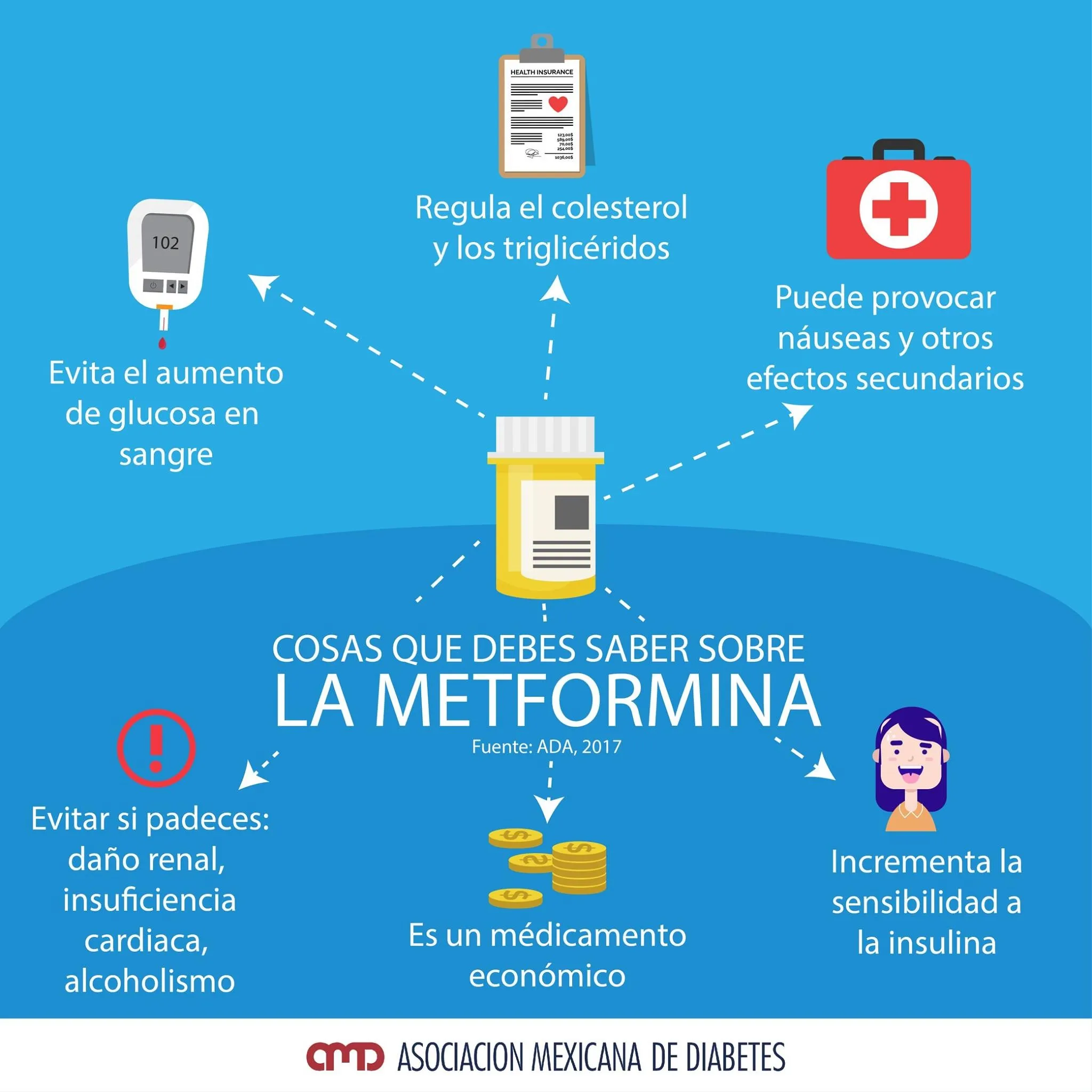When changes in food and regular physical exercise are not enough for adequate glycemic control, metformin is the first drug that is usually used.The fact that its administration is oral and that can be combined with other medications or insulin, make it a great ally for the treatment of type 2 diabetes, the most frequent among adult patients.In fact, it is the most prescribed antidiabetic in our country.But how does it work? What characteristics do you have to make the first pharmacological option against diabetes?
Metformin acts by reducing blood glucose, that is, the concentration of blood sugar.It does it through several mechanisms: reducing the amount of glucose (sugar) that produces the liver, reducing the amount of glucose that the body of food absorbs and increasing the effect of insulin on the body.«Glucose, once we take it with food, enter through the intestine with transporters and through them passes from the blood to the cells.Metformin favors the action of these transporters so that glucose can pass to the cells, ”expands Pablo Caballero, a pharmacist from the scientific dissemination area of the General Council of Pharmacists.
Metformin treatment works through three mechanisms:
- Decreases glucose production by liver.
- Reduces the absorption of glucose by the intestine and therefore, the arrival of sugar to the bloodstream is delayed.
- Increase sensitivity and reception of body to insulin cells.This allows glucose to take advantage of as a source of energy.
For which patients is metformin indicated?
"It is recommended for people with type 2 diabetes mellitus, that is, those patients in which the pancreas produces insulin but this is not entirely functional or that is insufficient to maintain normal blood glucose levels," says the pharmacist."Because the mechanism of action of metformin largely implies the potentiation of insulin action, it is not used in people with type I diabetes mellitus because these patients do not produce insulin or produce very small amount," he adds.
In this way, the technical tab is prescribed especially in overweight patients, when the diet and exercise alone are not enough for the control of the pathology.It can be used in adults and children from 10 years of age, as well as monotherapy and in combination with insulin.
Another use of metformin, although this is not properly found in the technical file, is in women with sterility problems by polycystic ovar syndrome.These women, who usually have insulin resistance, can be benefited from the consumption of this drug because it favors ovulation and fertility.
When the pharmacological treatment with Metformin would be prescribed, the endocrinologist Franz Martin, vice president of the Spanish Diabetes Society (SED) recognizes that there is a lot of discussion in this field: «It depends on the circumstances of the patients.There are those that have a strong genetic component and that, despite maintaining a healthy lifestyle, you see that they are on their way to type II diabetes little by little, through prediabetes ».The latter is diagnostic when basal blood glucose is between 110 and 125 mg/dl, glucose tolerance between 140 and 200 mg/dl and glyd hemoglobin (HBA1C) between 5.7 and 6.4 %.
How is it taken?
According to the General Pharmaceutical Council, the dose should be individualized taking into account the characteristics of the patient.Normally it is usually started with a tablet from 500 to 800 mg, three times a day.Subsequently this doseIt can be increased to a maximum of one gram, three times a day.It must be taken during meals or immediately after them because they can reduce some of their adverse intestinal reactions.
What are your possible adverse effects?
«In general, metformin is tolerated very well, it does not usually cause adverse effects.If these occur are usually at the beginning and are usually gastrointestinal discomfort type diarrhea, abdominal pain, nausea or vomiting, ”says the pharmacist.He believes that it is important to explain to the patient that these adverse effects are usually mild and that they are common at first;But that in a few days, they usually send.
In this way, among the very frequent adverse reactions (which occur in one in ten patients), the Spanish Agency for Medicines and Health Products (AEMPS) collects: gastrointestinal disorders such as nausea, vomiting, diarrhea, abdominal pain and loss of loss ofappetite.Clarifying that "these disorders appear more frequently during the start of treatment and disappear spontaneously in most cases."
Another of the possible side effects that have been reported has to do with patients who have vitamin B12 deficits.However, Caballero, he emphasizes: «It is very rare.It is known that it affects 1 in 10,000 patients who take metformin.It occurs because this, sometimes, can interfere with the absorption of vitamin B12 and in a long -term treatment they can end up reducing the levels of this in blood.But it is something weird.
«What is important is that metformin is not mixed with alcohol because it increases the risk of an adverse reaction that is very rare, lactic acidosis, but that can be serious.Patients who suffer from it can have pain to breathe, abdominal and even in serious states, can lead to coma, ”says the pharmacist.
Why is the first option in diabetes treatment?
One of the advantages that metformin possesses compared to other diabetes treatments is that it is very rare that hypoglycemia appears, a complication of the disease in which sugar levels are too low and can make the patient enter into a coma.
In addition, comfort also comes into play."It is true that it depends on each patient and each situation, but metformin is usually of first choice because it is orally, not by injection as another type of medications, which is much more practical for patients," says Caballero.
However, it should be stressed that metformin does not exclude a healthy lifestyle that includes adequate food and physical exercise practice since diabetes is usually a chronic disease that will accompany the patient throughout his life.


